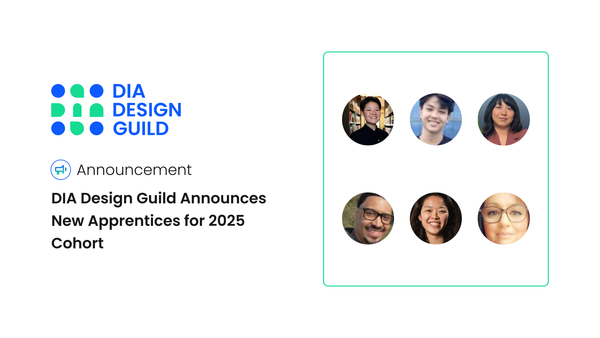Representing D for diversity and design at the UX Book Club - Why We Stopped Reading “Design Of Everyday Things”
A foundational UX book turns into a discussion for diversity and biases.

At the beginning of 2022, DIA Design Guild welcomed our second cohort of apprentices.
It was my idea to start a book club. I intentionally picked books that I thought would be helpful for incoming UX designers and researchers. Books that I, too, had never read.
Don Norman’s Design of Everyday Things was everywhere. On every list and in every syllabus. It was a book I had seen recommended a countless number of times within UX circles. It is considered to be one of those foundational books. And since I’ve never read it, it seemed like a good book to start with.
The book club has become a core group of apprentices and mentors, an intersection of neurodiverse folks. Effectively a book club, but also a space to share our perspectives of neurodiversity in UX. The book club is made up of 98% people of color, and mostly women. I was really excited about where things were going.
People in the book club began to share their experiences and relate them to the terms and concepts (like “affordances”) that Norman lays out. We found ourselves deviating from the book fairly often, simply because the examples we could relate to were different from the examples in the book.
Ultimately we were talking about human centered design. But in ways that made sense to us, and that wasn’t necessarily in alignment with the way Norman laid out his book. The more we talked, like when we discussed AI and machine learning in relation to design, as well as the racist biases that show up in AI design, the more the book felt outdated.
As a book club founder, I was starting to feel the weight of my choice. Reading what is effectively an industry standard, or pushing the status quo of “traditional” design literature, seemed like a good idea in theory. But in practice, not as much.
Then, around the end of February, Vivianne Castillo posted an exchange that she had with Don Norman on Twitter. It put a lot of the thoughts I was having on my own into some much needed context.
1/Early today I tweeted about the lack of Don Norman's understanding of white supremacy & colonization, as reflected in an excerpt from his book. He slid into my DMs wanting to connect to learn more &...well...his patronizing arrogance supports my belief and then some. Receipts👇🏾 pic.twitter.com/qOyMBn2QKQ
— Vivianne Castillo (@vcastillo630) February 28, 2022
This Twitter discussion was shared with the book club. It made a lot of people, including myself, upset. Could we separate the author, as a person, from his work? That answer was a resounding “no” from everyone, including myself.
I spent a good two weeks having conversations with book club attendees, both apprentices and mentors. Many apprentices in the book club felt that there were better ways to use our time. Either to talk more about human centered design or to review other resources, more equitable ones. I made the judgment call. It was time to pick another book.
Throughout this process, our book club discussed complex issues - racism, sexism, creating equity as designers and researchers - and what can be done as relative beginners in the industry to work on these issues. At DIA, we are bringing in new designers from underrepresented groups; helping them use their voice, their experiences and their perspectives to create and define an experience that helps everyone.
As UX’ers, we work on design or research components that affect every user’s life, hopefully, for the best. But there are practices or processes that have been implemented in good faith. Practices that maybe aren’t the best way to do things anymore.
As we move forward, I hope that these examples will help our new researchers and designers begin to see why the work they do is important, and why every perspective and voice matters.
Written by Jessi Shakarian; Reviewed by Justin Kim and Grace Lau; Copyediting by Nasimeh Taghavi





